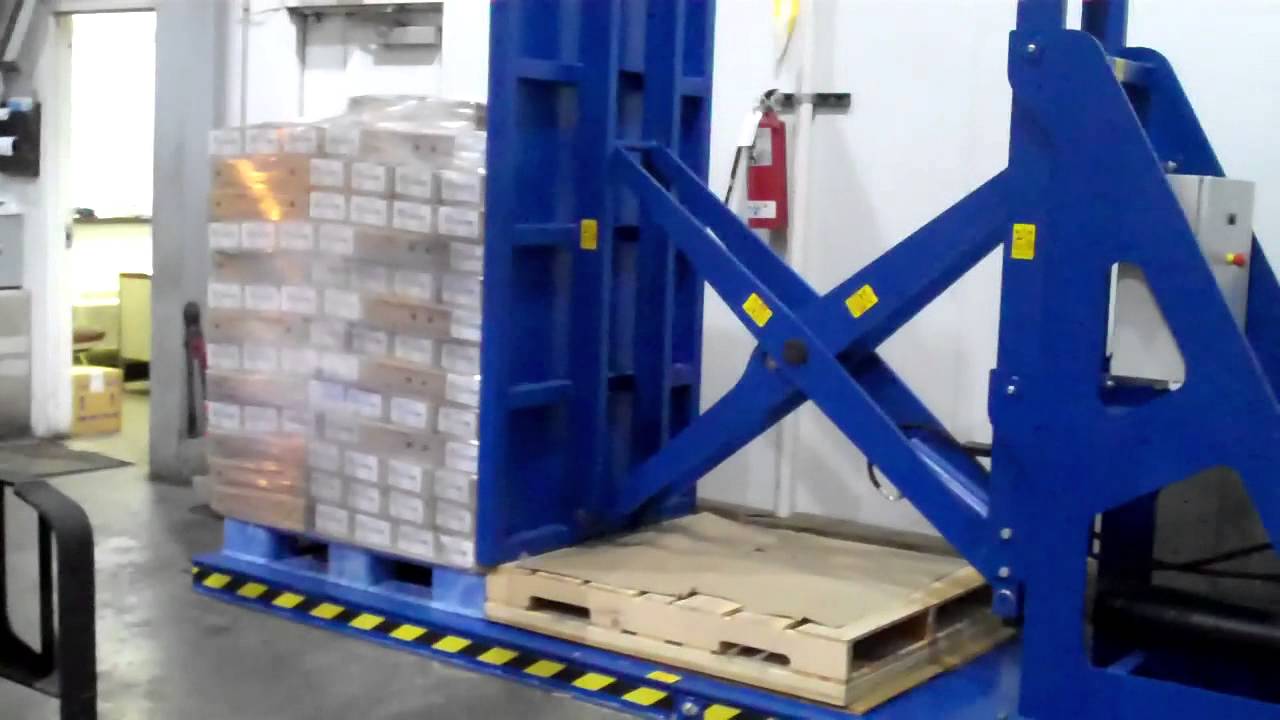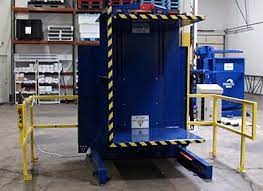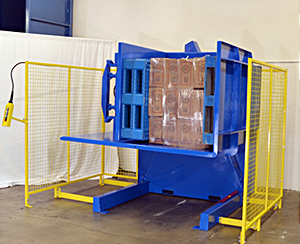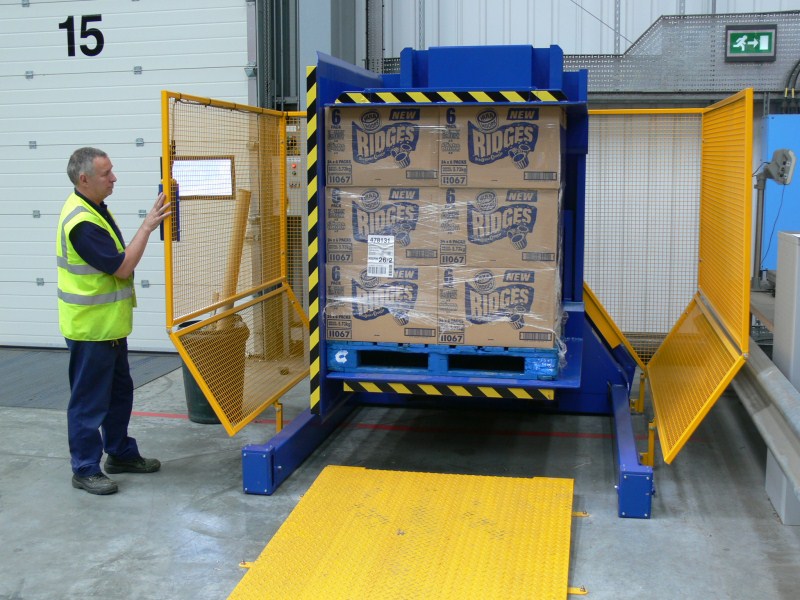Top Reasons South Korea Industries Choose Pallet Inverters for Smart Factory Trends and Industry 4.0 Upgrades
Are you struggling to keep up with the demands of modern manufacturing? You see the pressure to automate and digitize, but every new investment feels like a risk. The constant challenges of high operational costs, aging equipment, and the need for greater efficiency can be overwhelming. It often feels like you are just trying to keep the production line moving, leaving little room for strategic upgrades that could future-proof your business. This reactive approach chips away at your profit margins and leaves you vulnerable to market changes, making it difficult to plan for long-term growth. What if there was a proven solution that addresses these core issues? Leading industries in South Korea, a global hub for technological innovation, are turning to a specific piece of equipment to solve these exact problems. They are using pallet inverters not just as machines, but as a foundational element in their push towards the smart factory and Industry 4.0.
South Korean industries choose pallet inverters primarily because they directly address the core goals of a smart factory: increasing operational efficiency, enhancing worker safety, reducing supply chain costs, and enabling seamless integration with Industry 4.0 data systems. These machines automate a critical but often overlooked bottleneck in material handling, providing a high-return-on-investment solution for factories aiming to upgrade their logistics and production flows for a digital future.

I have seen this transformation firsthand. As an engineer and now a factory owner, I understand the pressure to make every investment count. The move toward automation is not just a trend; it's a necessity for survival and growth. The success seen in demanding markets like South Korea provides a clear blueprint. But simply knowing what they are doing is not enough. To truly understand its value for your own operations, we need to dig deeper into how this technology delivers such impactful results. Let's break down the specific reasons why pallet inverters have become a go-to choice for some of the world's most advanced manufacturing plants.
How Do Pallet Inverters Boost Operational Efficiency in a Smart Factory?
Your production line is only as fast as its slowest point. You might have a high-speed packaging line, but if it takes two workers 15 minutes to manually transfer a finished load from a factory pallet to a shipping pallet, you have created a major bottleneck. This manual process is not just slow; it's inconsistent and ties up valuable manpower in a non-value-added task. You are constantly battling delays that ripple through your entire schedule. A pallet inverter offers a direct and powerful solution, turning this logistical hurdle into a smooth, automated step in your process.
A pallet inverter boosts operational efficiency by automating the entire process of transferring goods between pallets. It securely clamps the load, rotates it, and allows for the quick exchange of the pallet at the bottom. This reduces a task that took many minutes down to less than 60 seconds. This dramatic speed increase directly translates to higher throughput, allowing your production lines to run closer to their true capacity and helping you achieve goals like 95% equipment uptime.

Dive Deeper: From Bottleneck to High-Speed Hub
To appreciate the full impact on efficiency, we need to analyze the before-and-after scenarios. In a traditional setting, pallet swapping is a purely manual task. This introduces variability and significant hidden costs. An automated approach with a pallet inverter, however, creates predictability and unlocks new levels of productivity.
First, let's consider the direct time savings. The manual process involves cutting stretch wrap, having workers physically unstack boxes or bags onto a new pallet, and then re-wrapping the load. This is slow, physically demanding, and carries a high risk of product damage from being dropped or mishandled. A pallet inverter mechanizes the entire sequence. The operator, often the same person driving the forklift, simply places the load into the machine. The machine does the rest. This shift from manual labor to machine automation is a core principle of Industry 4.0.
| Metric | Manual Pallet Exchange | Pallet Inverter Exchange |
|---|---|---|
| Time per Pallet | 10-20 minutes | < 60 seconds |
| Labor Required | 2-3 workers | 1 operator (often the forklift driver) |
| Process Consistency | Low (depends on workers) | High (machine-controlled) |
| Product Damage Risk | High | Very Low |
Second, this efficiency gain allows for labor optimization. The workers who were previously tied up with the repetitive, low-skill task of re-stacking can be reassigned to more critical roles. They can focus on quality control, machine monitoring, or preparing the next shipment. This is not about replacing workers, but about elevating their contribution, a key goal for any forward-thinking manager like Javier Morales who aims to reduce operational costs while improving output.
Finally, in a true smart factory, the pallet inverter becomes more than a standalone machine. It acts as a critical node in an automated logistics flow. It can be integrated with Automated Guided Vehicles (AGVs) or Autonomous Mobile Robots (AMRs). The AGV can deliver a pallet from the production line directly to the inverter's infeed conveyor. The inverter performs its function, and another AGV can pick up the load on the new pallet from the outfeed conveyor to take it to the warehouse or loading dock. This creates a fully "lights-out" material handling loop, maximizing your产能利用率 (capacity utilization rate) and minimizing human intervention.
What is the Role of Pallet Inverters in Enhancing Worker Safety and Ergonomics?
Every factory owner knows that the most valuable asset is their people. Yet, manual material handling remains one of the leading causes of workplace injuries. You see the reports: back strains, repetitive stress injuries, and accidents from dropped loads. These incidents are not just tragic for the employee; they result in lost workdays, increased insurance premiums, and a negative impact on team morale. You are constantly looking for ways to engineer these risks out of your processes. Investing in safety is not an expense; it's an investment in the stability and productivity of your workforce.
Pallet inverters play a crucial role in enhancing worker safety by completely removing the need for manual lifting and re-stacking during pallet exchange. By mechanizing this strenuous task, the machine takes on the physical burden. This directly mitigates the risk of musculoskeletal disorders (MSDs), which are the most common and costly type of workplace injury associated with manual handling. It transforms a high-risk job into a safe, machine-tended operation.

Dive Deeper: Engineering a Safer Workspace
The safety benefits of a pallet inverter extend far beyond just preventing back injuries. A well-designed system creates a fundamentally more secure and ergonomic environment. Let’s break down the specific ways it achieves this.
The primary benefit is the elimination of manual handling of heavy or awkward loads. In industries like steel, products can be dense and heavy. Manually unstacking steel coils, wire spools, or metal parts is not only inefficient but extremely hazardous. The inverter’s clamping system is designed to handle these heavy loads with consistent, calculated pressure, something a human worker cannot replicate safely. This removes the immediate risk of strains, sprains, and crush injuries.
| Hazard Type | Manual Pallet Exchange | Pallet Inverter Operation |
|---|---|---|
| Musculoskeletal Strain | Very High (lifting, bending, twisting) | Eliminated |
| Crush/Impact Injury | Moderate (from dropped items) | Eliminated (load is contained) |
| Repetitive Strain Injury | High (from repeated motions) | Eliminated |
| Operator Fatigue | High | Low (supervisory role) |
Beyond removing the manual task, modern pallet inverters are built with integrated safety systems. These are not optional add-ons; they are core features.
- Safety Fencing: The entire operational area of the machine is enclosed by high-visibility safety guarding. This physical barrier prevents anyone from accidentally walking into the machine's path while it is in motion.
- Light Curtains: These photoelectric safety devices create an invisible barrier of light at the machine's access points. If an operator or object breaks this barrier while the machine is running, the system immediately and safely stops all motion. This is critical protection during loading and unloading.
- Dual-Hand Controls: For some models, the operator must use both hands on separate controls to initiate a cycle, ensuring their hands are safely away from any moving parts.
- Hydraulic Lock Valves: In the event of a power failure, these valves prevent the clamping and rotating mechanisms from losing pressure, ensuring the load remains securely held until power is restored.
By implementing a pallet inverter, you are not just buying a piece of equipment. You are making a clear statement that your company prioritizes the well-being of its employees. This commitment helps build a positive safety culture, reduces lost-time incidents, and ultimately contributes to a more stable and reliable workforce, which is a key goal for any plant owner facing operational challenges.
Can Pallet Inverters Really Lower Supply Chain and Material Handling Costs?
You are constantly analyzing your operational budget, looking for every opportunity to reduce costs without sacrificing quality. The costs associated with pallets and material handling can be a significant, and often hidden, drain on resources. You might be paying high fees for pallet rental programs, writing off damaged products, or losing efficiency due to poor pallet management. These seemingly small costs add up, directly impacting your goal of reducing overall operating costs by 8% or more. You need solutions that provide a clear and measurable return on investment.
Yes, pallet inverters provide a direct path to lowering supply chain and material handling costs in several key areas. They allow you to switch from expensive, high-quality rental pallets to more affordable in-house or one-way shipping pallets. This single change can generate substantial savings. Furthermore, they drastically reduce product damage that occurs during manual transfers and help recover goods from broken pallets, turning potential losses into saved revenue.

Dive Deeper: Uncovering Hidden Savings and Maximizing ROI
The financial case for a pallet inverter is compelling, especially for a data-driven leader who conducts a strict可行性分析 (feasibility analysis) for every investment. The savings are not theoretical; they are tangible and can be calculated. Let’s explore the primary sources of cost reduction.
The most significant saving often comes from pallet management strategy. Many companies are locked into expensive pallet rental pools (like CHEP or PECO) because their customers require high-quality pallets for delivery. However, using these expensive pallets for internal storage and movement within the factory is an unnecessary cost. A pallet inverter creates a "firewall." You can use durable, captive, or low-cost pallets for all in-house operations. Only when a load is ready for shipment is it transferred to the high-cost rental or export-grade pallet.
Let's look at an example:
- Cost of rental pallet: $6 - $8 per trip/lease
- Cost of in-house plastic or basic wood pallet: $15 - $25 (lasts for years)
- Cost of one-way shipping pallet: $8 - $12
By keeping the expensive pallets out of your daily workflow and only using them for the final step, a high-volume facility can save tens or even hundreds of thousands of dollars annually.
A second major area is product damage reduction. Manual re-stacking is risky. A dropped box, a punctured bag, or a dented can often means the entire product must be scrapped or reworked. A pallet inverter handles the entire load as a single, stable unit. The controlled clamping and gentle rotation minimize stress on the products and their packaging. For a steel mill producing 2 million tons annually, even a 0.5% reduction in damaged goods due to handling represents a massive saving.
Finally, consider operational recovery and warehouse optimization. What happens when a pallet at the bottom of a stack of five is damaged in the warehouse? Manually, you would have to unstack the top four pallets to replace the broken one. With a pallet inverter, you can simply take the entire stack, invert it, and replace the now-accessible top pallet. This saves an enormous amount of time and labor and prevents a small problem from becoming a major logistical disruption. This directly contributes to higher warehouse efficiency and lower labor costs.
| Cost Reduction Area | Without Pallet Inverter | With Pallet Inverter |
|---|---|---|
| Pallet Costs | High cost (rental pallets used internally) | Low cost (cheap pallets used internally) |
| Product Damage | Higher rate from manual handling | Minimal rate from controlled handling |
| Labor for Recovery | High (manual unstacking for broken pallets) | Low (quick inversion and replacement) |
| Rental Pallet Loss/Damage Fees | High risk of fees | Low risk (pallets managed at one point) |
How Do Pallet Inverters Integrate with Industry 4.0 Systems like MES and WMS?
You are committed to the数字化转型 (digital transformation) of your factory. You plan to deploy MES, IoT sensors, and data analytics to achieve total production visibility. However, a major challenge is that many traditional machines are "islands" of automation. They perform a task but do not communicate with your central systems. This creates data silos and prevents you from achieving a truly connected, intelligent manufacturing environment. You need equipment that is not just mechanical but is also digitally native.
Modern pallet inverters are designed for seamless integration with Industry 4.0 systems. They function as intelligent nodes within your factory's digital ecosystem. Through their on-board PLC (Programmable Logic Controller) and communication protocols like OPC UA or MQTT, they can connect directly to your Manufacturing Execution System (MES) and Warehouse Management System (WMS). This enables two-way communication: the central system can issue commands to the inverter, and the inverter can report back its status, cycle data, and diagnostics in real-time.

Dive Deeper: Connecting the Physical and Digital Worlds
For a leader focused on deploying MES and IoT, the integration capability of a pallet inverter is perhaps its most compelling feature. It transforms the machine from a simple material handler into a vital data source and an automated execution point within your smart factory strategy.
Here’s how the integration works in practice:
-
MES-Driven Operations: Your MES tracks every production order. When an order's pallet is complete, the MES can automatically send a command to the pallet inverter's PLC. This command can include specific instructions, such as "Take Load ID #54321 and transfer from internal pallet type 'A' to shipping pallet type 'B'." The forklift operator simply delivers the load, and the machine already knows what to do. Once the cycle is complete, the inverter sends a "task complete" signal back to the MES, which then updates the order status and can trigger the next step, like notifying the WMS to arrange for pickup.
-
WMS-Informed Logistics: Your WMS manages inventory location and status. Integration allows the WMS to have real-time visibility into the pallet exchange process. For example, the WMS knows a load is on a blue in-house pallet in location A1. It directs an AGV to take it to the inverter. After the inverter swaps it to a wooden shipping pallet, it informs the WMS. The WMS now knows the same load is on a wooden pallet and directs it to its new location in the shipping staging area. This ensures 100% inventory accuracy without manual data entry.
| System | Command to Inverter | Data from Inverter |
|---|---|---|
| MES | Execute pallet transfer for Order #54321 |
Cycle complete, Cycle time, Error codes |
| WMS | Process pallet #P-9876 |
Pallet type changed from blue to wood |
| Predictive Maintenance Platform | (Monitors data) | Motor current, Hydraulic pressure, Cycle count |
- Data for Predictive Maintenance: This is a key goal for achieving 95% uptime. IoT sensors embedded in the pallet inverter can monitor critical parameters like motor amperage, hydraulic fluid pressure and temperature, and cycle counts. This data can be streamed to a central analytics platform. By analyzing trends, the system can predict when a component is likely to fail before it actually breaks down. For instance, a gradual increase in motor current could signal bearing wear. Your maintenance team receives an alert to schedule a replacement during planned downtime, avoiding a costly and unexpected production stoppage. This proactive approach is the essence of a smart, self-aware factory.
By integrating the pallet inverter, you are bridging the gap between your physical material flow and your digital management systems, creating the very "全面生产可视化" (comprehensive production visualization) that you aim to achieve.
Conclusion
For South Korean industrial leaders, pallet inverters are more than just machines. They are strategic assets for building the efficient, safe, and data-driven smart factories of the future.
My Insight
I remember my early days as an engineer on the factory floor. I saw workers manually lifting heavy steel parts, hour after hour. We celebrated when we got a simple crane to help. Back then, efficiency was about muscle and sweat. Today, efficiency is about data, safety, and intelligent automation. Seeing the adoption of pallet inverters in a hyper-competitive market like South Korea confirms what I’ve learned over 25 years: the biggest gains come from solving problems that are hidden in plain sight. Pallet handling is one of those problems.
A successful business leader like Javier Morales doesn't just buy a machine; he invests in a solution. He looks for a partner who understands the bigger picture. The true value of a pallet inverter isn't just in its ability to turn a load. It's in how it unlocks potential across your entire operation—how it integrates with your MES to improve scheduling, how it protects your workers to ensure stable production, and how it cuts hidden costs to boost your bottom line.
This is why I founded SHJLPACK. My mission is to share the knowledge I gained on my journey to financial independence. It’s not just about selling equipment. It’s about being a knowledge-sharing platform, providing a TOTAL SOLUTION FOR WRAPPING MACHINE and handling systems. It’s about helping you connect the dots, so you can make the strategic investments that will not only solve today's challenges but also build a stronger, more profitable business for tomorrow.




